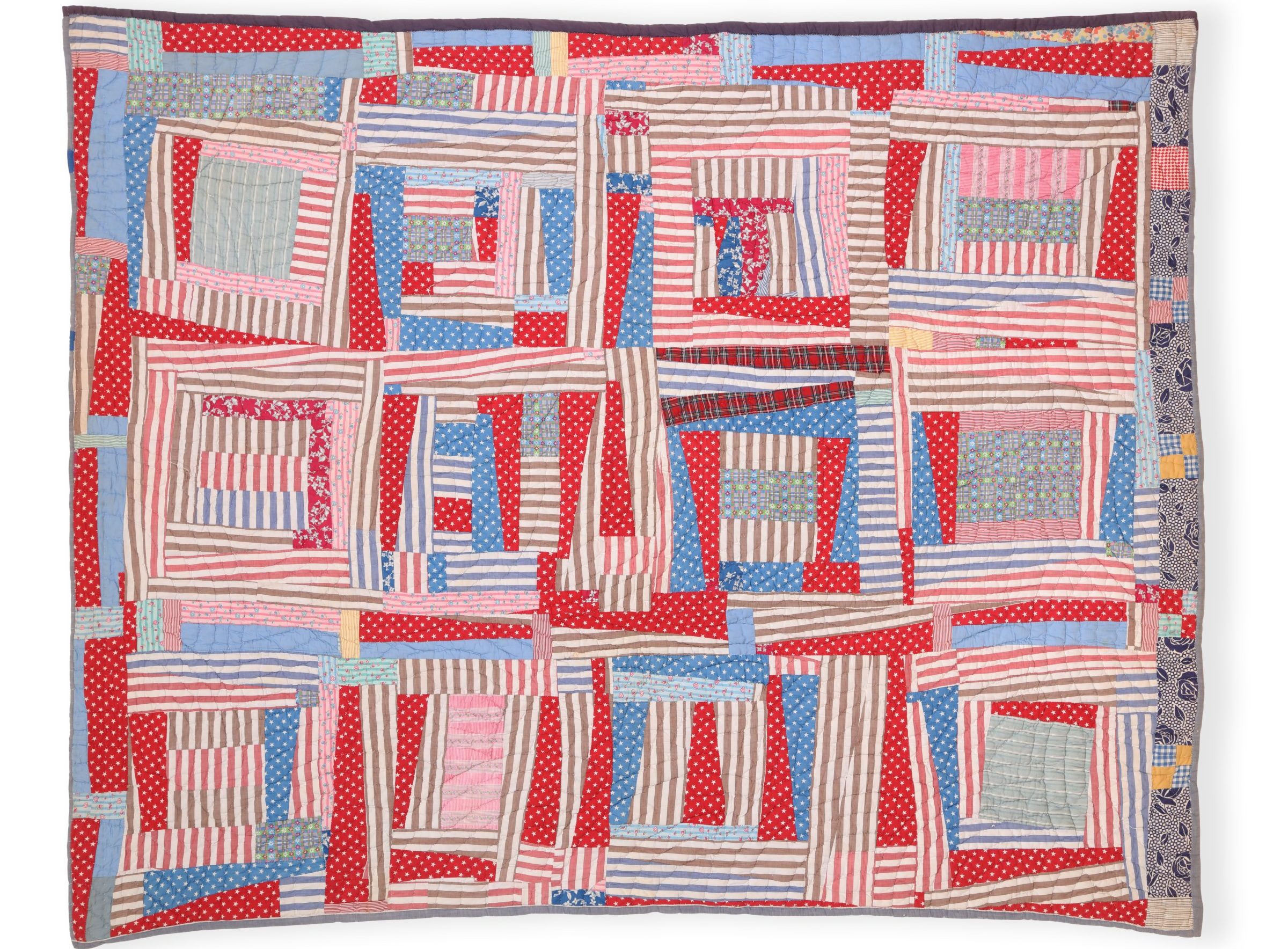Welcome to One Fine Show, where Observer highlights a recently opened exhibition at a museum outside of New York City—a place we know and love that already receives plenty of attention.
All of art history can be viewed as one long conversation: ideas are proposed and then responded to, furthering the discussion as new ground is broken in the rhetoric. When it comes to contemporary art, we’re at one of those stalled points in the conversation where many of its former contributors have begun to look at their phones because it’s getting late. American folk art appeals at times like these because it seems to exist outside of the conversation and to offer a glance into another universe of purer creativity… or at least one that’s more approachable.
A new show at the High Museum of Art, “Patterns in Abstraction: Black Quilts from the High’s Collection,” seeks to diagram a different conversation. The museum began collecting such material in 1982 but over the past six years has more than quintupled its holdings of quilts made by Black women, and many examples of these are on display in this exhibition. Among them are works by well-known quilters from Gee’s Bend, Alabama, such as Mary Lee Bendolph, Louisiana Bendolph and Lucy T. Pettway, along with pieces by Atlanta-based quilters such as Marquetta Johnson.
SEE ALSO: The Roth Bar Is Transforming the Gallery Experience at Hauser & Wirth Somerset
These represent fine examples of folk art but share plenty of ideas and conventions. Of particular focus are the Birds in the Air and Housetop themes, two-centuries-old quilt patterns that demonstrate the language of the medium. These are geometric building blocks for those seeking to represent the natural world or built environment, respectively, and they allow for profound variation. Lucy T. Pettway’s Birds in the Air (1981) manages to personify and animate color triangles that rise to confront a sky of yellow and black. Contrast this with another from a now-unknown maker from the 1930s, in which the triangles are bold and static, staring the viewer head-on in cool blue, disintegrating only near the bottom.
Some of these conventions were store-bought. A 1934 edition of the Sears, Roebuck and Co. catalog invited homemakers to take their places “among the geniuses of the world, for quilt making has again come into its own, is again one of the ‘fine arts.’” Kits and patterns could become the building blocks for new styles. The Housetop method sees the sewer build inward, in rows, but whatever else they want to do from there should work in this flexible vernacular. One by an unknown artist—Untitled (Housetop Quilt with Multiple Borders), circa the 1940s—is done in mostly pastels, with lovely subtle variations within the rows.
One of the finest works in this show is a variant of the Housetop style, again from an artist lost to time who worked in the 1940s, that builds multiple Housetops, all variations on the American flag. This predates Jasper Johns’ work with flags but implies a subtle, similar message about iconography, obsession and patriotism. Folk art is good because you can trust it, but this show demonstrates that it’s not as removed from the broader conversation as you might assume.
“Patterns in Abstraction: Black Quilts from the High’s Collection” is on view at the High Museum of Art through January 5, 2025.

